



SELECTED
ISSUE
|
|
Leisure Management - Still got it!

Active ageing

|
|
| Still got it!
|

Not all retirees are ready to wave goodbye to their trainers and say hello to daytime TV. In fact, in the latest Active People survey, the most significant
rise in women participating in sport was among the 55–64 age group.
Kath Hudson looks at some inspiring programmes catering for seniors
|
|
|
 |

Janey Anderson
Health development officer
Citadel Leisure Centre, UK
 |
|
Invigor8 is an Ayrshire-wide initiative, run in conjunction with the NHS as part of a falls prevention project. Fourteen classes are run in South Ayrshire’s leisure centres, churches and community halls – mobility and transport to and from the sessions can be a challenge, particularly in rural areas, so Invigor8 tries to take the programme to those who need it.
The sessions work to increase strength, endurance and balance, with the main aim being to keep people independent and living at home for longer.
There’s always a 30-minute break for a cuppa and a chat, which is really important when engaging with our participants: many of them are socially isolated and this time to get to know other people is as important as the physical activity, as they start to feel a sense of camaraderie in the group.
It’s really important to have a well-trained, empathetic team who are approachable and good at listening. We also undertake assessments to show people how their balance and strength are improving, which encourages them to keep coming to the sessions.
Some of the more physically able participants go on to take part in other classes like Aquatrim.
| |
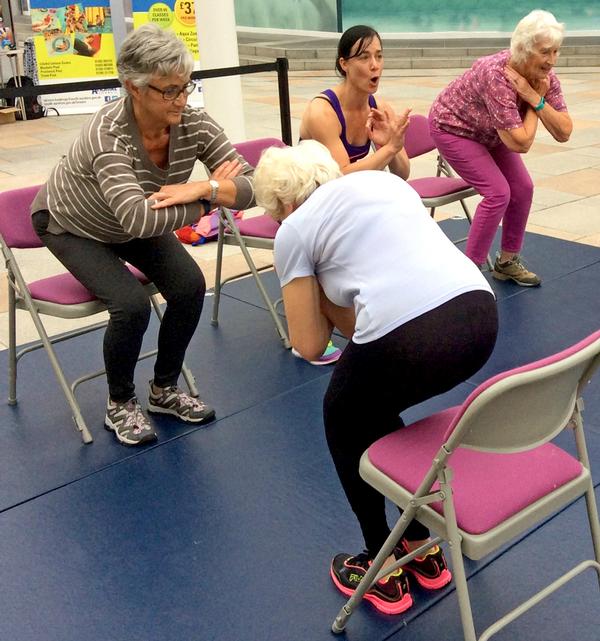

|

The Invigor8 sessions work on balance and strength |
|
|
 |

Stephanie Wadlow
GP referral co-ordinator
Hailsham Leisure Centre, UK
 |
|
Freedom Leisure has been proactive in reaching out to this demographic, and we now offer a number of services for older people.
Our programme includes aerobics, line dancing, curling, bowling, a strength and balance class that works on postural stability, pool-based classes and yoga. The most recent addition to the programme is a chair-based session for people who have had a stroke or have Parkinson’s.
This year we’ll be taking our functional fitness MoT out into the community, which tests aspects such as how steady people are on their feet, their reach and their grip strength.
Sport and leisure centres can be quite an alien environment for many older people, so fitness instructors need to have a lot of patience and good communication skills.
Signage needs to be clear and not too high, older users need to be given clear instructions at reception, and you need to have staff around to keep an eye on them – for example, helping them through the turnstile or carrying their drink for them in the café. Class times also need to be scheduled appropriately: not too early and not in the dark.
| |
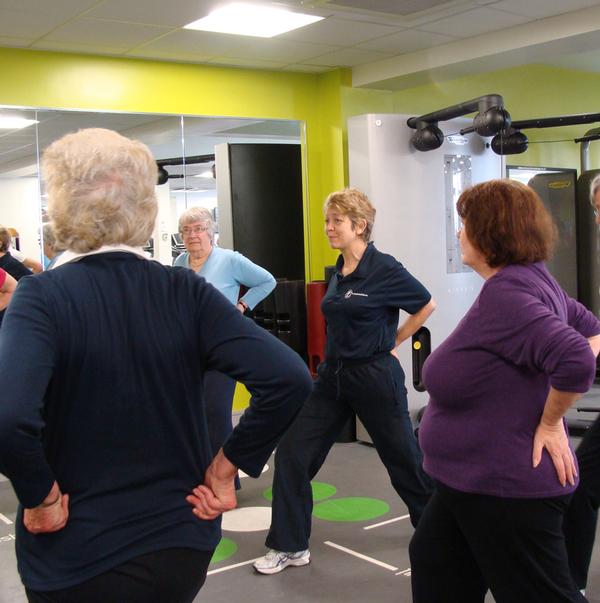

|

Functional fitness MoTs will be rolled out into the community |
|
|
 |

Cliff Collins
Director of programmes
EuropeActive
 |
|
EuropeActive ran a project, PAHA (promoting physical activity and health in ageing), which sought to establish if a six-week intervention of structured exercise, exercise counselling and behavioural change support could be effective in increasing the physical activity levels of inactive 55- to 65-year-olds.
Run by instructors trained in active ageing and behavioural change, the programme comprised three exercise sessions a week – covering aerobic exercise, resistance training and stretching/mobility – and the intensity was increased over the period of the intervention. In addition, the PTs had individual counselling sessions with the participants.
From the 669 people who took part – all of whom were previously inactive – 89 per cent completed the full six weeks and 70 per cent were continuing to exercise three months after the trial. All reported an improvement in their health and fitness. The study demonstrates the importance of mentoring, guiding and motivating people to exercise in a planned way, with a sense of health improvement being key to continued exercise.
Based on the PAHA experience, EuropeActive published a Good Practice Guide in December, which is available as a download in English, French and German from the EuropeActive website.
| |
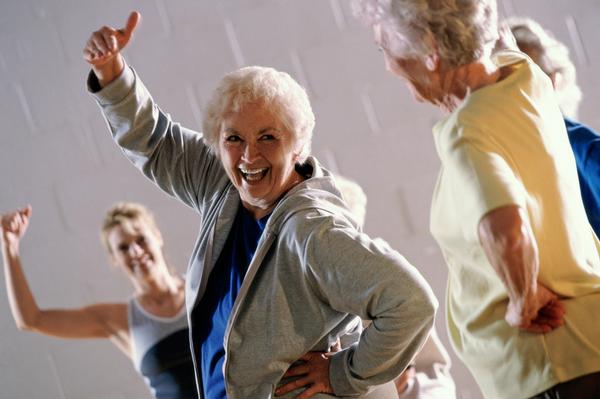

|

Social interaction is as beneficial for seniors as the exercise itself |
|
|
 |

Ben Wilkins
Head of community development
Oomph, UK
 |
|
Aimed at people in their 60s and above, Oomph started out five years ago as a care home intervention, but over the past 18 months it has reached beyond this setting into leisure centres, gyms, churches and libraries, as a paid-for class.
It’s all about making exercise fun – like a party, with exercise being the side-effect. Sessions last between 20-60 minutes, with a mix of balance and strengthening exercises, maybe some balloon volleyball and a quiz.
In care homes, the exercises are mostly seated. In the community, if people are more able, it’s a mixture of seated and standing. We’re moving towards more competition-based exercise, as research shows that the more interactive it is, the more engaged people are and the more inclined to change their behaviour.
We believe peer-led exercise is the secret to success and we train people in their 60s, 70s and even early 80s to run the classes – often as volunteers. Oomph offers a three-day course to become a trainer, including one day of pre-learning, or a two-day course for those already working in a care home setting or who have a qualification to work with older adults.
Research conducted by University College London, which assessed perceived wellbeing and ability to cope, showed that participants believed their quality of life had risen by 13 per cent since they started the programme.
| |
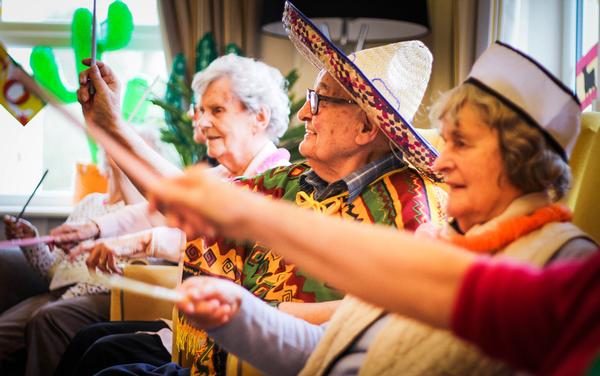

|

Oomph believes peer-led exercise is the secret to success |
|
|
 |

Kristoffer Sjöberg
Managing director
Activage, Sweden
 |
|
Many gyms run senior classes but are only reaching the active seniors. If you haven’t been to the gym before, or if you have an injury, this can be intimidating. We wanted to create a gym that would be seen as a meeting place, where people could come for a coffee first before plucking up the courage to try a workout. The social aspect is very important for this demographic.
Every member gets an individual programme and their own PT, who they see six times over the first eight weeks. Our instructors are highly trained, with a great deal of expertise in working with older bodies – and not just at an entry level, as some of our members have ambitions to go cross-country skiing and run marathons, so they need advice on training appropriately.
There’s a maximum of 12 people in each class. We make sure every participant works at their own level, as it’s important to always leave them with a positive feeling so they want to come back soon and make exercise a habit.
We don’t really use many machines, as we want our participants to be able to use their bodies just as they need to do in regular life.
Another important point to bear in mind when marketing to this demographic is that it’s necessary to use methods like newspaper advertising and leaflet drops, as 40–50 per cent aren’t actually on social media.
| |
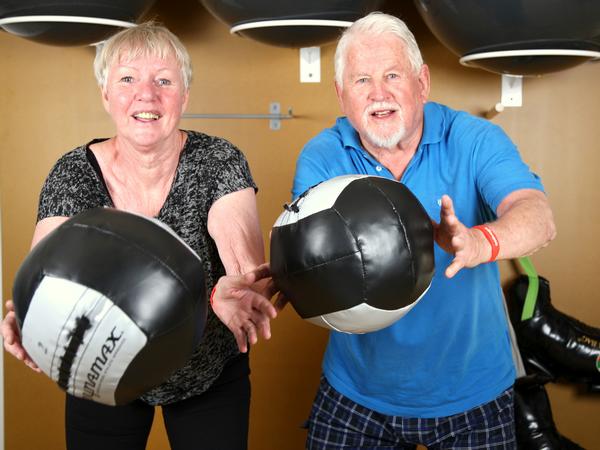

|

Members work with functional equipment and their body weight |
|
|
 |

Amy Fastier
Development officer
Steady Steps, UK
 |
|
Edinburgh Leisure’s falls prevention programme, Steady Steps, offers structured classes with robust evidence-based exercises led by specialised instructors. All classes are tailored to the individual, so everyone works to their own ability. The sessions focus on improving muscle strength, which in turn improves balance and subsequently confidence. The social element also plays a vital part, with time for tea and chat at the end of every class. We also deliver educational sessions about how to prevent falls, based on NHS guidelines.
It’s important to create a welcoming, friendly environment, from the initial contact at reception through to a follow-up phone call to find out how the class went. We also carry out physical function tests before and after the 16-week course, so people can see how they’re improving.
There are 15 classes across Edinburgh each week, and participants are also encouraged to do two home-based sessions. In the last year, 526 participants were referred to the programme and 85 per cent reported increased confidence relating to balance as a result of the programme. Ninety-five per cent improved in at least one of the three physical function tests and 77 per cent have not experienced a fall since completing the programme.
| |
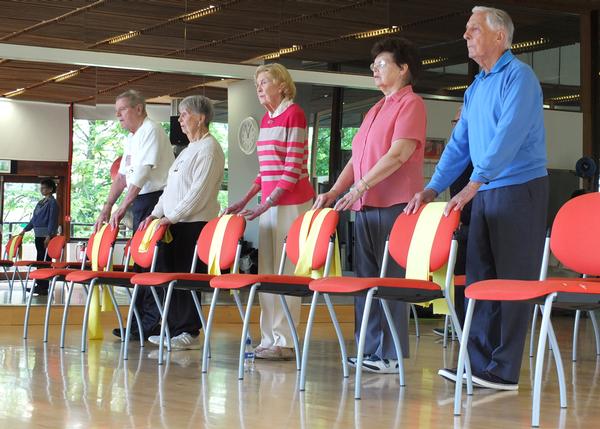

|

Incidence of falls has dropped dramatically among participants |
|
|
 |

Alfonso Moreno
Managing director,
ABE Europe, SPAIN
 |
|
Suitable for all ages and health conditions, the ABE platform is an unstable round surface filled with air that reduces the impact on joints by dispersing air when you jump, allowing people to do an aerobics-style class without as much effort.
Participants do simple movements to the rhythm of the music, using equipment such as weights, elastic bands and maracas. Music is key to keeping the 45-minute classes fun, and fun is the main motivator to keep people coming. We run classes in a number of senior centres in Madrid, targeting the over-65s. About 200 people attend two classes a week.
We take measurements at the start and end of the year – weight, body measurements and composition, medication, illnesses – and we also make diet suggestions. Weight loss is between 3-10kgs, and we see an increase in muscle mass, fat reduction, higher force and agility rates, cholesterol reduction and great psychological improvements. ?
|
|
 |
| Originally published in Health Club Management 2017 issue 2
|
|
 |
|
